How to properly grow Clematis Grunwald?
Clematis fell in love with gardeners for beautiful flowers and an abundance of greenery. They are the decoration of any site. You can decorate gazebos with clematis, drape walls. Usually, several varieties are planted with different flowering periods and colors. Clematis does not require much maintenance. Therefore, they are gaining more and more popularity.
Content:
- Description of the variety
- All about reproduction
- Landing
- Grunwald care
- Pruning clematis
- Diseases and their signs
Description of the variety
A relatively new hybrid of Clematis Grunwald was created in 2014. This strong bush rises to a height of 3.5 m. Bright green leaves are located on burgundy shoots, which turn brown with age. With the help of a large number of tendrils that form on young branches, the liana easily climbs any support.
During the flowering period, the bush is covered with bright large flowers with a diameter of 12 cm with velvety petals.
They are colored purple with a purple tint. Below the petals are dark lilac, with a light stripe in the middle. Purple stamens are held on beige legs. The center of the flower is yellow.
The hybrid is appreciated not only for its beautiful large flowers. It blooms profusely and continuously. The first flowers open in June. The active flowering period lasts until September. Then its intensity decreases, the number of flowers decreases. In this mode, it continues to bloom until October.
All about reproduction
Usually clematis are propagated in several ways:
- Seeds... This method is not suitable for the Grunwald hybrid. Clematis will be obtained from seeds as a result of long-term cultivation, but the maternal qualities of the variety will not be transferred to it. Therefore, use the remaining methods. In addition, they are much simpler and more effective.
- Layers. The easiest way to get a young plant with varietal characteristics is by digging one of the shoots in the spring. For this, it is not cut short. After laying in the groove, several sheets should look out. Dig a groove so as not to touch the roots of the main plant. It should not be too shallow, otherwise the soil will dry out quickly and it will be difficult for the roots to form and develop. The depth of the groove is from 5 to 10 cm. The shoot is laid in it, it is sure to pin it with a wooden or metal bracket. If this is not done, the shoot can be easily lifted out of the ground by running pets or strong gusts of wind shaking the bush. Watered mulch to retain moisture. The place of the prikop is regularly examined. When the shoot grows back, sprinkle its base with earth so that only the top is visible. The soil should be moist at all times. It is better not to transplant it in the fall. In the spring, the formed bush is separated from the mother plant and transplanted to a new place.
- By dividing the bush... The clematis bush is divided in the spring, after pruning. Then the procedure is easier to handle, because tangled vines complicate the process. Often, daughter ones are formed near the main bush. They are carefully dug out so as not to damage the mother plant, and transferred to a new place.
- By cuttings... If it is not possible to get a young bush by layering, propagate by cuttings. In June, they are cut from the middle part of the shoot so that each has one or two internodes.In the upper part, 2 cm is left above the knot. The bottom is up to 4 cm. It is treated with a root former. They are planted obliquely in a loose substrate. It can be peat, river sand, or a mixture of these. The optimum temperature for rooting is 22 degrees. Cover the plants with foil to maintain high humidity. Spray regularly, keep the soil moist. It is better to plant rooted cuttings in a pot, which is hidden in a cellar for the winter. Keep the soil moist without overflowing. If they did not have time to do this, they cover for the winter. In the spring they are planted in a permanent place. By the fall, he should give buds that are better to pick.
Landing
Planted clematis into the ground at the beginning of summer, when the threat of return frosts has passed. You can do this in early autumn, in September or October. The planting time is calculated so that at least a month remains before frost. During this time, he will need to put down roots in order to easily endure the winter.
Landing features:
- A well-lit place for clematis is chosen, in the background of the site. It is desirable that the wind avoids it. Then the risk of damage during the growing season will be minimal.
- Any soil is suitable for growing Clematis Grunwald, not very acidic. It is good if it is light and nutritious.
- In this case, the size of the pit for planting clematis with a depth and diameter of 50 cm.On clay soils, the size of the pit is slightly larger, 70 cm.
- If the groundwater comes close to the soil level, drainage from gravel, expanded clay or small stones of other origin about 10 cm high is laid on the bottom of the pit.
- If there is more than one bush, a meter is left between them.
- Prepare the soil by mixing loose clay, humus (2 buckets). Add mineral fertilizers (100 g superphosphate).
- A peg is immersed in the pit, which will serve as a support in the first months of life. If you do this later, you can damage the regrown roots.
- Place the bush in a hole on a mound formed at the bottom of the hole. Smooth out the roots.
- The depth of immersion of the root collar is 6 cm. A recess is left around the bush. A year later, the soil is poured on top, increasing the depth by 10 cm. On light soils, they deepen more.
- Bush pruning begins immediately after planting. All shoots are cut into 3 buds. A few weeks later, when the young shoots grow, they are again cut into 3 buds. In this case, the root system develops well, and the number of shoots increases.
- After planting, the bush is watered, mulched with peat, mown grass or compost... Sun protection can be installed.
- Install a stationary support by making it yourself or buying it in a store. The height must be at least one and a half meters. As they grow, after a few days, the shoots are tied to a support, first to a small one, then, when they grow up, to a large one.
Grunwald care
Regular watering is important for a lush bush and abundant flowering. In the first year, 3 liters of water are poured at a time. Already by the third year of life, 2 buckets of water are brought under the bush, carrying out the procedure every week, and in case of severe drought - 2 times a week. The first year of flowering is not allowed, tearing off the formed buds. If the bush is weak, they may not be there. Clematis spends all his energy on building up the root system.
In the third year, several shoots will form at the bush. Some of them can be pinched to prolong flowering. The shoot will grow back, and the buds will appear on it later. Thus, the duration of the flowering of Clematis Grunwald is regulated. Throughout the summer, they constantly loosen the soil around the bush, not getting close to the root system. They remove weeds that can drown out the vine at the beginning of summer.
Usually clematis are covered for the winter after pruning. This applies to varieties that tend to freeze at low temperatures. The Grunwald hybrid belongs to the 4th class of frost resistance. It can withstand 34 degrees of frost. Only young plants are covered. An adult liana can be left for the winter without pruning and shelter.But in the spring you will still have to shorten the shoots. Therefore, you can spend it in late autumn, cutting off the shoots by 30 cm.
In the fall, it is imperative to check the condition of the root collar of clematis - if it is on the surface, sprinkle it with earth or humus.
It is more dangerous to hide the plant for the winter under a thick layer of covering materials that will not allow air to pass through. With sharp fluctuations in temperature, clematis may die.
Clematis is not very picky about feeding, but reacts to them by increasing the number and size of flowers. Therefore, it is recommended to apply fertilizer once a week. 30 g mineral fertilizer bred in a bucket of water and brought under an adult bush. In this case, the soil must be moist. If there has been no rain for a long time, pre-watered with clean water. After fertilization, watered again.
Used for dressing organic fertilizers... Bred mullein or chicken droppings (1:10), give him a week to ferment. Then a liter of gruel is diluted in a bucket of water and brought under the clematis bush. These are nitrogen fertilizers that need to be applied in the spring. At the beginning of summer, they bring in a glass of wood ash under a bush. It promotes better ripening of shoots, increases their winter hardiness. Fertilization is stopped in August. The bush gradually completes all phases of development and begins to prepare for winter.
Pruning clematis
The variety belongs to the third pruning group. This means that flowers are formed on this year's shoots. At the same time, only leaves decorate last year's. They are usually cut in spring or late fall.
But not completely, because you need to give a start to young stems. One or two buds are left, from which flowering shoots will grow. Cutting height - 30 cm. If there are two-year-old or older shoots on the bush, they are cut into a ring.
If the bush is not cut, its shoots will randomly intertwine with each other, forming tangles that will not decorate the bush, but will pull it down. This will decrease the number of colors.
They carry out sanitary pruning of last year's shoots, removing broken or frozen ones. Do not remove last year's shoots that have not yet bloomed. The first year by autumn, the shoots are cut, leaving three buds on each. This will help the plant to winter well. In the spring, they are renewed by cutting off one more kidney.
Diseases and their signs
The main disease that can affect Clematis Grunwald is wilting. This fungal disease occurs in root system, and then, after the defeat of the roots, it manifests itself in the ground part by wilting and drying of the shoots. The prevention of the disease is good drainage, established during planting, loose, moisture-permeable soil of low acidity on the site. In case of disease, the damaged parts are removed. Spill 3 times with Fundazole solution.
The ground part of the plant can be affected by fungal diseases:
- Powdery mildew, rust them gray rot. They appear in the form of a plaque of the corresponding color.
- Alternaria - drying of shoots and leaves.
- Septoria - the appearance on the leaves of rounded spots with a red border.
For the treatment and prevention of fungal diseases, plants are treated with preparations containing copper (bordeaux liquid, oxychom, copper oxychloride).
More information can be found in the video:



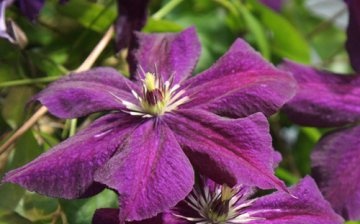
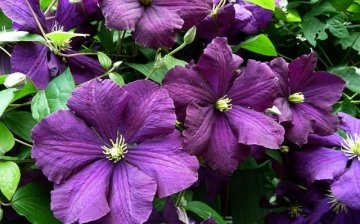
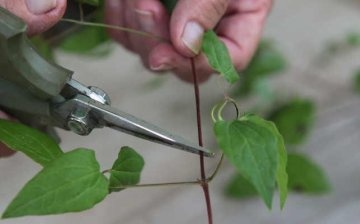
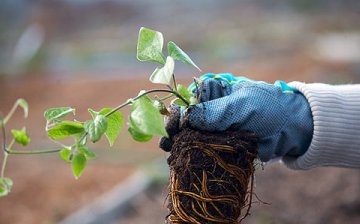
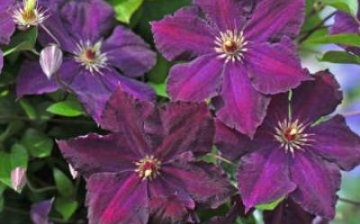
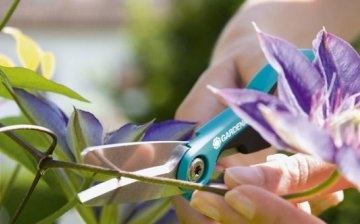
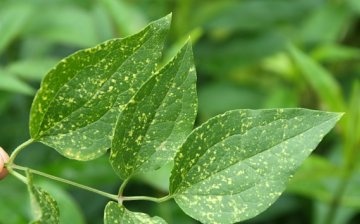








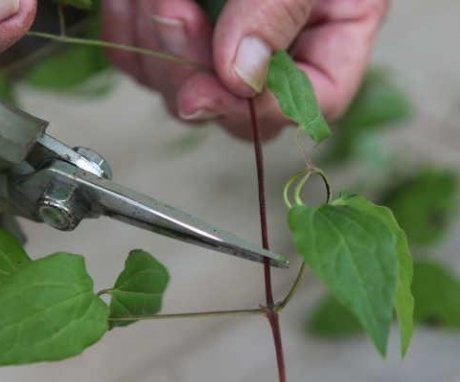

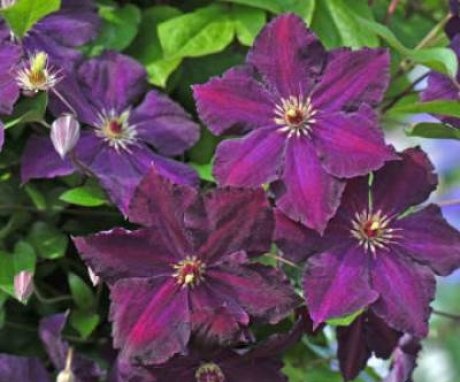
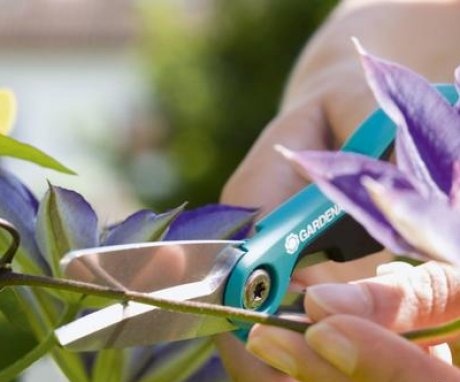
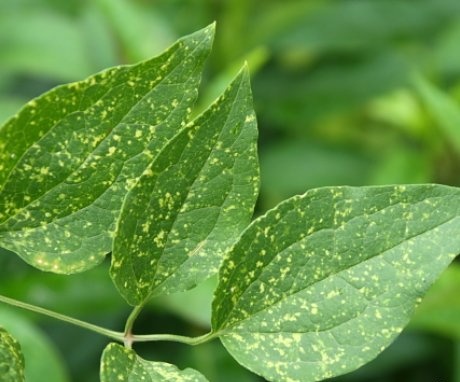
Clematis is an amazingly beautiful flower. My sister is an admirer of these beauties, several such beauties grow in her garden and please the eye, but they give her a lot of trouble too. Handsome men are quite capricious.
Yes, I agree with you absolutely, a flower of extraordinary beauty. On our site right next to the house, these handsome men are weaving, we cooked a special lattice for them, we tie them up like weaving cucumbers. But as for the hassle, you know, I would not say.It seems to me that these flowers are quite unpretentious, despite their grace and beauty.